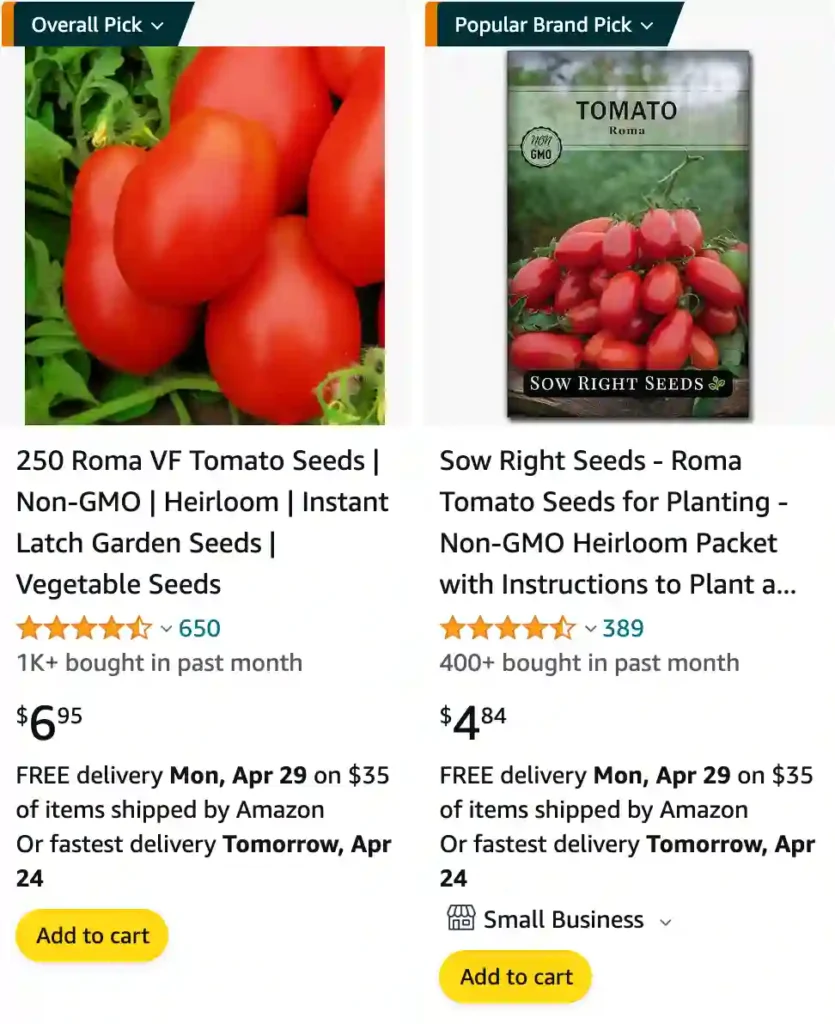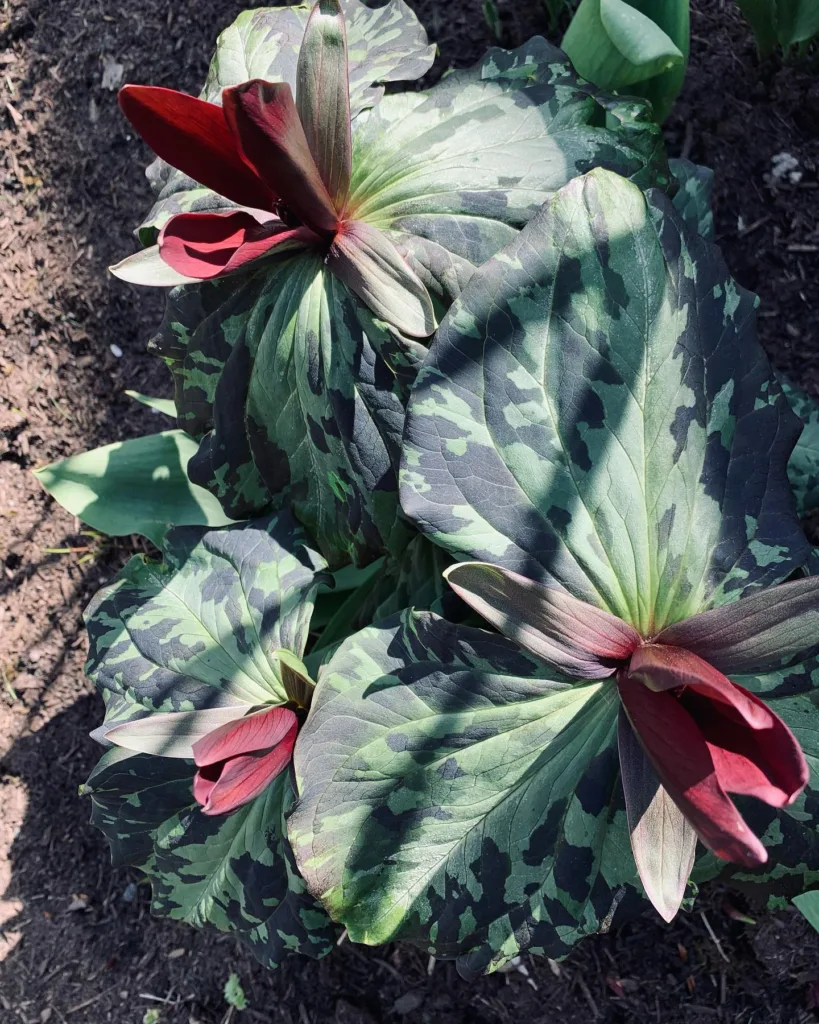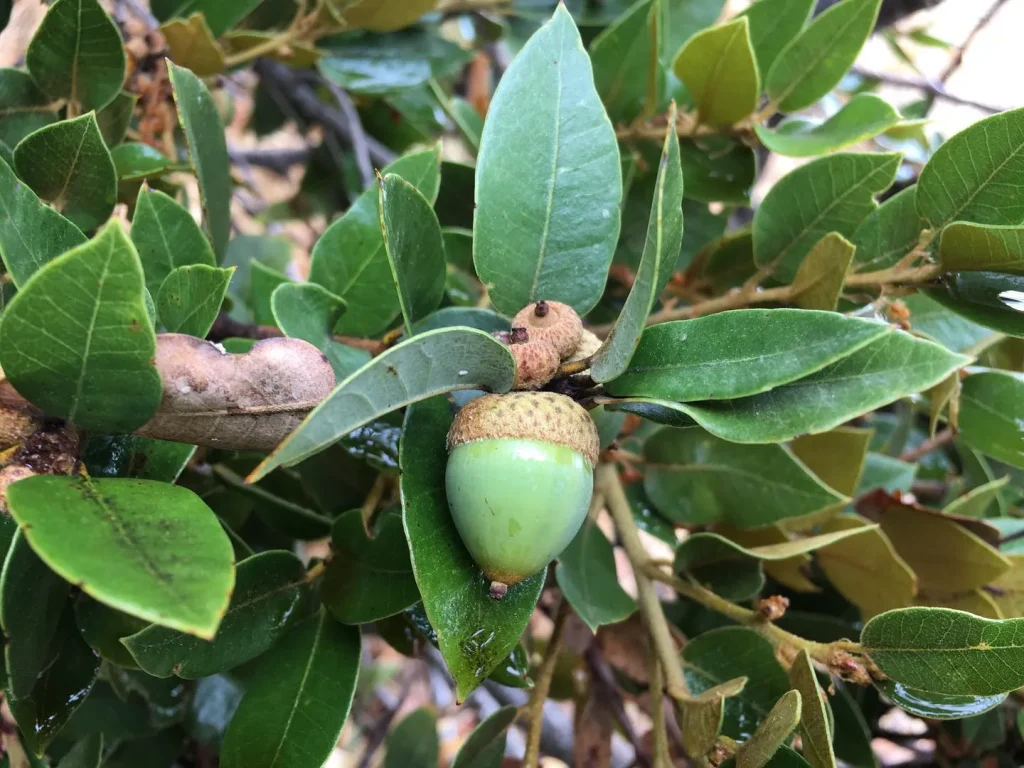
Are Roma tomatoes determinate or indeterminate?
Roma tomatoes can actually be either determinate or indeterminate, which surprised me when I first started gardening! I’ve grown both types. The determinate ones are bushier and produce a big harvest all at once – awesome for making a ton of sauce at the end of the season. I also like the indeterminate Romas; they keep producing right up until frost if I keep them well-maintained. That means my family has fresh tomatoes on our salads from summer all the way into early fall.
How many Roma tomatoes in a pound?
Hmm, well, it really depends on the size of the Roma tomatoes. In my experience, Roma tomatoes can vary quite a bit in size, so it’s hard to give an exact number without seeing them. Typically, I’ve found that there are about 3 to 4 medium-sized Roma tomatoes in a pound. But again, it can fluctuate depending on their size and ripeness. I usually prefer using Roma tomatoes for sauces and salads because they have a rich flavor and fewer seeds compared to other varieties.
How many calories in a Roma tomato?
I’m not exactly sure about the exact number of calories in a Roma tomato, but from what I’ve researched and observed, they’re generally quite low in calories. I’d estimate that a medium-sized Roma tomato contains around 35 to 40 calories. Personally, I find them to be a great addition to my meals because they’re not only low in calories but also packed with vitamins and antioxidants. Whether I’m slicing them up for a salad or using them as a base for a homemade salsa, Roma tomatoes add both flavor and nutrition to my dishes.
How to cut Roma tomatoes?
Cutting Roma tomatoes is something I’ve learned through trial and error over time, and I’ve found a method that works well for me. First, I wash the tomatoes thoroughly under running water. Then, I use a sharp knife to slice off the stem end of the tomato. Next, I cut the tomato in half lengthwise. With the cut side facing down, I slice each half into strips, and then I dice the strips into the desired size. This method helps me to achieve uniform pieces that are perfect for salads, salsas, or sauces. Additionally, if I’m using Roma tomatoes for stuffing, I’ll cut off the top and scoop out the seeds and pulp with a spoon before filling them with my desired ingredients. Overall, it’s all about finding a technique that works best for you and your culinary needs.
What to do with Roma tomatoes?
Oh, there are so many wonderful things you can do with Roma tomatoes! One of my favorite ways to use them is to make homemade pasta sauce. I start by roasting them with some garlic, olive oil, and herbs until they’re beautifully caramelized and flavorful. Then, I blend them into a smooth sauce that’s perfect for tossing with pasta or spreading on pizza dough. Another favorite of mine is to slice Roma tomatoes and layer them with fresh mozzarella and basil for a classic Caprese salad. It’s simple yet so delicious, especially when drizzled with balsamic glaze. And of course, you can never go wrong with using Roma tomatoes in salsa or bruschetta for a burst of freshness and flavor. Whether you’re cooking up a storm in the kitchen or simply snacking on them raw, Roma tomatoes are versatile and always a delight to use in recipes.
How many carbs in a Roma tomato?
Carbohydrate content in Roma tomatoes can vary slightly depending on their size and ripeness, but generally, they are low in carbs. On average, a medium-sized Roma tomato contains about 3 to 4 grams of carbohydrates. Personally, I find Roma tomatoes to be a great addition to my meals, especially when I’m watching my carb intake. Whether I’m enjoying them sliced in salads, blended into sauces, or simply snacking on them raw, Roma tomatoes provide flavor and nutrition without adding too many carbs to my diet.
Are plum tomatoes the same as Roma tomatoes?
Plum tomatoes and Roma tomatoes are actually similar but not exactly the same. Plum tomatoes are a broad category of tomatoes that includes various cultivars, while Roma tomatoes are a specific type of plum tomato. Roma tomatoes are a variety of plum tomato known for their firm texture, low seed count, and meaty flesh, making them ideal for cooking and canning. Plum tomatoes, on the other hand, can encompass different shapes, sizes, and flavors within the broader category. While they share some similarities, such as being elongated and having a dense flesh, Roma tomatoes are a distinct type of plum tomato with their own unique characteristics.
How many Roma tomatoes per plant?
The number of Roma tomatoes produced per plant can vary depending on several factors, including growing conditions, care, and the specific variety of Roma tomato being cultivated. On average, a healthy Roma tomato plant can yield anywhere from 8 to 12 pounds of tomatoes over the course of a growing season. This can translate to roughly 25 to 40 individual tomatoes per plant, although the exact number can vary. Factors such as proper watering, sunlight, fertilization, and pruning can all contribute to the overall productivity of the plant. In my experience, providing adequate support for the plant, such as staking or caging, can help maximize tomato production and ensure a bountiful harvest.
How to roast Roma tomatoes?
Roasting Roma tomatoes is one of my favorite ways to enhance their flavor and create a versatile ingredient for various dishes. To roast Roma tomatoes, I start by preheating the oven to around 375°F (190°C). Then, I wash and dry the tomatoes thoroughly before slicing them in half lengthwise. Next, I place the tomato halves cut side up on a baking sheet lined with parchment paper or aluminum foil. Drizzling them with a generous amount of olive oil and seasoning with salt, pepper, and any desired herbs like thyme or rosemary adds extra flavor. Then, I roast the tomatoes in the preheated oven for about 30 to 40 minutes, or until they become soft and caramelized around the edges. Once roasted, I let them cool slightly before using them in pasta sauces, soups, sandwiches, or as a flavorful topping for pizzas and bruschetta. Roasted Roma tomatoes add depth and richness to any dish, and their sweet, concentrated flavor is simply irresistible.
What does a Roma tomato look like?
A Roma tomato typically has an elongated shape with a slightly pointed end. Its skin is smooth and shiny, and it’s usually a deep red color when fully ripe. The flesh of a Roma tomato is dense and meaty, with fewer seeds and less juice compared to other tomato varieties. When you slice a Roma tomato open, you’ll notice its distinct inner structure, characterized by thick walls and minimal seed cavities. Overall, Roma tomatoes have a robust appearance and a characteristic shape that sets them apart from other types of tomatoes.
Are Roma tomatoes good for canning?
Yes, absolutely! Roma tomatoes are renowned for their meaty texture, low seed count, and rich flavor, which make them ideal for canning. Their firm flesh holds up well during the canning process, resulting in jars of tomatoes that maintain their shape and texture. Whether you’re canning whole tomatoes, making tomato sauce, or preparing salsa, Roma tomatoes are a popular choice among home canners because they produce delicious results. Personally, I’ve found that canning Roma tomatoes allows me to preserve the summer harvest and enjoy their fresh flavor year-round in various dishes. Just make sure to follow safe canning practices and use proper sterilization techniques to ensure the longevity and safety of your canned tomatoes.
How big of a pot for Roma tomatoes?
The size of the pot you’ll need for growing Roma tomatoes largely depends on whether you’re growing them indoors or outdoors, as well as the variety of Roma tomato you’re planting and your preferred growing method. In general, Roma tomatoes have a relatively compact root system compared to some other tomato varieties, so they can do well in containers.
For outdoor growing, a pot with a capacity of at least 5 gallons (about 19 liters) should provide enough space for a single Roma tomato plant. This size allows the roots to spread out comfortably and ensures adequate soil moisture retention.
If you’re growing Roma tomatoes indoors or in a smaller space, you can opt for a slightly smaller pot, around 3 to 5 gallons (11 to 19 liters), depending on the available space and your watering routine. Just make sure the pot has proper drainage holes to prevent waterlogging, and use a high-quality potting mix rich in organic matter to provide essential nutrients for the plants.
Ultimately, the key is to choose a pot that provides ample space for the roots to grow, adequate drainage, and enough soil volume to support the plant’s growth and development throughout the growing season.
How to grow Roma tomatoes in a pot?
Growing Roma tomatoes in a pot is a great option, especially if you have limited garden space or want to enjoy fresh tomatoes on your patio or balcony. Here’s a step-by-step guide to growing Roma tomatoes in a pot:
- Choose the right pot: Select a large container with a capacity of at least 5 gallons (19 liters) for each Roma tomato plant you plan to grow. Ensure the pot has drainage holes at the bottom to prevent waterlogging.
- Select quality soil: Use a well-draining potting mix rich in organic matter. You can also mix in some compost to provide additional nutrients for your tomato plants.
- Plant your seeds or seedlings: If starting from seeds, plant them indoors about 6 to 8 weeks before the last frost date in your area. Once the seedlings have grown to about 6 inches tall and have developed a few sets of leaves, transplant them into your pots. If using seedlings, plant them directly into the pots at the appropriate depth, burying the stem up to the lowest set of leaves.
- Provide support: Roma tomato plants tend to be bushy and can benefit from support to keep them upright as they grow. Place a sturdy stake or tomato cage in the pot at the time of planting to provide support for the plants as they mature.
- Water regularly: Keep the soil consistently moist but not waterlogged. Water the plants deeply whenever the top inch of soil feels dry to the touch. Avoid wetting the foliage to prevent fungal diseases.
- Fertilize regularly: Feed your Roma tomato plants with a balanced fertilizer every 2-3 weeks or as recommended on the fertilizer label. This will ensure they have the nutrients they need for healthy growth and fruit development.
- Prune and maintain: Remove any suckers that develop in the leaf axils of the tomato plants to encourage a more productive growth habit. Additionally, prune away any yellowing or diseased leaves to maintain plant health.
- Monitor for pests and diseases: Keep an eye out for common tomato pests such as aphids, whiteflies, and tomato hornworms, as well as diseases like early blight and blossom end rot. Treat any issues promptly to prevent them from spreading.
- Harvest your tomatoes: Once your Roma tomatoes ripen to a deep red color, they’re ready to harvest. Simply twist or cut them from the vine, being careful not to damage the plant.
By following these steps, you can enjoy a bountiful harvest of delicious Roma tomatoes right from your own pot!
If i die, water my plants!



